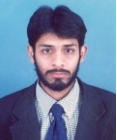Novel learning for control of nonlinear spacecraft dynamics
Abstract
With accurate dynamic system parameters (embodied in self-awareness statements), a controller can provide precise signals for tracking desired state trajectories. If dynamic system parameters are initially guessed inaccurately, a learning method may be used to find the accurate parameters. In the deterministic artificial intelligence method, self-awareness statements are formed as mathematical expressions of the governing physics. When the nonlinear, coupled expressions are precisely parameterized as the product of known matrix components and unknown vectrix (i.e., an intermediate between a dyadic and a matrix in regression form) tracking errors may be projected onto the known matrix to update the unknown vectrix in an optimal form (in a two-norm sense). In this work, a modified learning method is proposed and proved to have global convergence of both state error and parameter estimation error. The modified learning method is compared with those in the prequels using simulation experiments of three-dimensional rigid body dynamic rotation motion. The achieved state error convergence using the modified approach is two magnitudes better than using the methods in the prequels.
Keywords
Full Text:
PDFReferences
1. Johnson M. Space station robotic arms have a long reach [Internet]. Washington, DC: National Aeronautics and Space Administration; 2019 [updated 2022 Aug 13]. Available from: https://www.nasa.gov/mission_pages/station/research/news/b4h-3rd/hh-robotic-arms-reach.
2. Mahoney E. NASA seeks ideas for commercial uses of gateway [Internet]. Washington, DC: National Aeronautics and Space Administration; 2018 [updated 2018 Aug 25]. Available from: https://www.nasa.gov/feature/nasa-seeks-ideas-for-commercial-uses-of-gateway.
3. NASA Image Use Policy [Internet]. Washington, DC: National Aeronautics and Space Administration. Available from: https://gpm.nasa.gov/image-use-policy.
4. Bucchioni G, Innocenti M. Rendezvous in cis-lunar space near rectilinear halo orbit: Dynamics and control issues. Aerospace 2021; 8(3): 68. doi: 10.3390/aerospace8030068.
5. Bando M, Namati H, Akiyama Y, Hokamoto S. Formation flying along libration point orbits using chattering attenuation sliding mode control. Frontiers in Space Technologies 2022; 3: 919932. doi: 10.3389/frspt.2022.919932.
6. Colombi F, Colagrossi A, Lavagna M. Characterization of 6DOF natural and controlled relative dynamics in cislunar space. Acta Astronautica 2022; 196: 369–379. doi: 10.1016/j.actaastro.2021.01.017.
7. Sands T. Flattening the curve of flexible space robotics. Applied Sciences 2022; 12(6): 2992. doi: 10.3390/app12062992.
8. Sands T. Optimization provenance of whiplash compensation for flexible space robotics. Aerospace 2019; 6(9): 93. doi: 10.3390/aerospace6090093.
9. Jones A. Chinese space station robot arm tests bring amazing views from orbit [Internet]. New York: Space.com; 2022 [updated 2022 Aug 9]. Available from: https://www.space.com/china-space-station-wentian-robot-arm-test.
10. Jones A. See a large robotic arm “crawl” across China’s space station [Internet]. New York: Space.com; 2022 [published 2022 Feb 16]. Available from: https://www.space.com/china-space-station-robot-arm-video.
11. Lafarge N, Miller D, Howell K, Linares R. Autonomous closed-loop guidance using reinforcement learning in a low-thrust, multi-body dynamical environment. Acta Astronautica 2021; 186: 1–23. doi: 10.1016/j.actaastro.2021.05.014.
12. Albee K, Oestreich C, Specht C, et al. A robust observation, planning, and control pipeline for autonomous rendezvous with tumbling targets. Frontiers in Robotics and AI 2021; 8. doi: 10.3389/frobt.2021.641338.
13. Mehta PM, Linares R. A new transformative framework for data assimilation and calibration of physical ionosphere-thermosphere models. Space Weather 2018; 16(18): 1086–1100. doi: 10.1029/2018SW001875.
14. Oestreich CE, Linares R, Gondhalekar R. Autonomous six-degree-of-freedom spacecraft docking with rotating targets via reinforcement learning. Journal of Aerospace Information Systems 2021; 18(7): 417–428. doi: 10.2514/1.1010914.
15. Avendaño M, Arnas D, Linares R, Lifson M. Efficient search of optimal flower constellations. Acta Astronautica 2021; 179: 290–295. doi: 10.1016/j.actaastro.2020.10.026.
16. Arnas D, Lifson M, Linares R, Avendaño M. Definition of low earth orbit slotting architectures using 2D lattice flower constellations. Advances in Space Research 2021; 67(11): 3696–3711. doi: 10.1016/j.asr.2020.04.021.
17. Oestreich C, Espinoza A, Todd J, et al. On-orbit inspection of an unknown, tumbling target using NASA’s Astrobee robotic free-flyers. In: 2021 IEEE/CVF Conference on Computer Vision and Pattern Recognition Workshops (CVPRW); 2021 Jun 20–25; Nashville. New York: Institute of Electrical and Electronics Engineers (IEEE); 2021. p. 2039–2047.
18. Roberts TG. Geosynchronous satellite maneuver classification and orbital pattern anomaly detection via supervised machine learning [Master’s thesis]. Massachusetts (MA): Massachusetts Institute of Technology; 2021.
19. Ekal M, Albee K, Coltin B, et al. Online information-aware motion planning with inertial parameter learning for robotic free-flyers. In: 2021 IEEE/RSJ International Conference on Intelligent Robots and Systems; 2021 Sep 27–Oct 1; Prague. New York: Institute of Electrical and Electronics Engineers (IEEE); 2021. p. 8766–8773. doi: 10.1109/IROS51168.2021.9636325.
20. Cassinis LP, Park TH, Stacey N, et al. Leveraging neural network uncertainty in adaptive unscented Kalman Filter for spacecraft pose estimation. Advances in Space Research 2023; 71(12): 5061–5082. doi: 10.1016/j.asr.2023.02.021.
21. Park TH, D’Amico S. Robust multi-task learning and online refinement for spacecraft pose estimation across domain gap. Advances in Space Research 2023. In Press. doi: 10.1016/j.asr.2023.03.036.
22. Park TH, D’Amico S. Adaptive neural network-based unscented Kalman Filter for robust pose tracking of noncooperative spacecraft. New York: arXiv; 2022. doi: 10.48550/arXiv.2206.03796.
23. Zhang K, Pan B. Control design of spacecraft autonomous rendezvous using nonlinear models with uncertainty. Journal of Zhejiang University (Engineering Science) 2022; 56(4): 833–842. doi: 10.3785/j.issn.1008-973X.2022.04.024.
24. Smeresky B, Rizzo A, Sands T. Optimal learning and self-awareness versus PDI. Algorithms 2020; 13(1): 23. doi: 10.3390/a13010023.
25. Slotine J, Li W. Applied nonlinear control. Wilmington, DE: Prentice-Hall, Inc.; 1991. p. 392–436.
26. Sands T. Development of deterministic artificial intelligence for unmanned underwater vehicles (UUV). Journal of Marine Science and Engineering 2020; 8(8): 578. doi: 10.3390/jmse8080578.
27. Sandberg A, Sands T. Autonomous trajectory generation algorithms for spacecraft slew maneuvers. Aerospace 2022; 9(3): 135. doi: 10.3390/aerospace9030135.
28. Raigoza K, Sands T. Autonomous trajectory generation comparison for de-orbiting with multiple collision avoidance. Sensors 2022; 22(18): 7066. doi: 10.3390/s22187066.
29. Wilt E, Sands T. Microsatellite uncertainty control using deterministic artificial intelligence. Sensors 2022; 22(22): 8723. doi: 10.3390/s22228723.
DOI: https://doi.org/10.59400/jam.v1i1.42
(164 Abstract Views, 130 PDF Downloads)
Refbacks
- There are currently no refbacks.
Copyright (c) 2023 Bo-Ruei Huang, Timothy Sands

This work is licensed under a Creative Commons Attribution-NonCommercial 4.0 International License.

This site is licensed under a Creative Commons Attribution 4.0 International License.
 Journal of AppliedMath
Journal of AppliedMath



